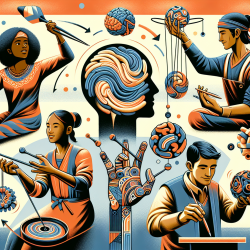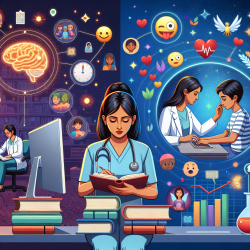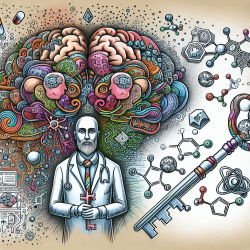Introduction
The intricate relationship between manual skills, handedness, and language organization in the brain is a fascinating area of study that has significant implications for speech-language pathologists. A recent editorial, "Manual Skills, Handedness, and the Organization of Language in the Brain," provides insights into these complex interactions and offers potential pathways for practitioners to enhance their therapeutic approaches. This blog will delve into the key findings of the research and discuss how these can be applied to improve outcomes for children receiving speech-language therapy.
Understanding the Research
The research highlights the neural and functional organization of language and praxis, exploring their connections with handedness and motor skills. It reveals that while right-handedness is often associated with left-lateralized manual praxis, left-handers may exhibit praxis skills in their non-dominant hemispheres. This suggests a more nuanced understanding of cerebral dominance and its impact on language processing.
Key findings include:
- Language and praxis skills are not strictly correlated with handedness, indicating a complex interplay of genetic and environmental factors.
- Short-term tactile learning, such as Braille reading, can induce functional and structural changes in the brain, highlighting the brain's plasticity.
- Motor system functioning can influence language processing, suggesting that physical actions or inactions may impact language acquisition.
Practical Implications for Practitioners
For speech-language pathologists, these findings underscore the importance of considering individual differences in cerebral organization when designing therapeutic interventions. Here are some practical ways to incorporate these insights:
- Customized Therapy Plans: Recognize that handedness and cerebral dominance can vary significantly among individuals. Tailor therapy plans to accommodate these differences, ensuring that interventions are personalized and effective.
- Incorporate Motor Activities: Since motor actions can influence language processing, consider integrating physical activities that engage both hemispheres of the brain. This could include tasks that require coordination and fine motor skills.
- Utilize Tactile Learning: Leverage tactile learning methods, such as Braille, to enhance language acquisition. This approach can be particularly beneficial for children with atypical language organization.
Encouraging Further Research
While the current research provides valuable insights, there is still much to explore regarding the relationship between manual skills, handedness, and language organization. Practitioners are encouraged to engage in further research to deepen their understanding and refine their therapeutic approaches. Areas for future investigation include:
- Exploring the genetic basis of handedness and its impact on language development.
- Investigating the role of motor activities in enhancing language processing and acquisition.
- Examining the potential for tactile learning methods to support language development in diverse populations.
Conclusion
The research on manual skills, handedness, and language organization offers a rich tapestry of insights that can enhance the practice of speech-language pathologists. By understanding and applying these findings, practitioners can create more effective, individualized therapy plans that cater to the unique needs of each child. As we continue to explore this fascinating field, we can look forward to even greater advancements in our ability to support language development in children.
To read the original research paper, please follow this link: Editorial: Manual Skills, Handedness, and the Organization of Language in the Brain.










